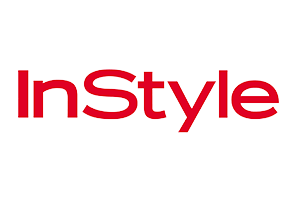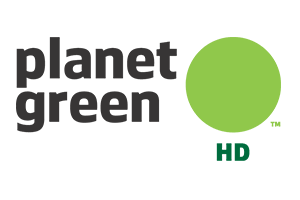Preventing and Treating Sun Damaged Skin
February 3rd, 2017 | Posted in: Beauty Tips | Tags: Beverly hills plastic surgery, cosmetic skin solutions, sun damaged skin
Considering that protecting our skin from the sun as an age prevention measure is a relatively new concept, many people find themselves grappling with sun damage from years of unprotected exposure. Fortunately, advances in cosmetic skin solutions have led to innovative treatments for sun damage.
Here’s a quick look at how Beverly Hills Plastic Surgery can help you prevent sun damaged skin and how you can treat the damage that you already have.
What is Sun Damage and How can it be Prevented?
Sun damage occurs when ultraviolet radiation damages the DNA of our cells. This damage accumulates over many years and manifests in several ways:
- Brown spots
- Dilated vessels
- Static wrinkles
- Skin laxity
- Enlarged pores
- Skin cancer
It is said that up to 90 percent of the visible signs of aging can be attributed to sun damage. So, the best way to prevent sun damage is to limit your sun exposure. Barring leading a nocturnal lifestyle, sun exposure is inevitable, and for many people, enjoyable. Sunlight helps your body to synthesize vitamin D, an essential vitamin for bone density and a healthy immune system. With the pros and cons of sun exposure in mind, it is important to enjoy the sun responsibly. Here are some tips on how to do that:
- Avoid exposing yourself to sunlight when the intensity of the UV index is high
- Wear a broad-spectrum sunscreen with a minimum SPF 30 on areas of exposed skin everyday
- Reapply sunscreen every two hours when exposed to sunlight
- Wear sunscreen on cloudy days, as damaging UVA rays can penetrate through glass, clouds, and smoke
- Wear protective clothing such as hats, sunglasses, and long sleeves to minimize sun damage
Treating Sun Damaged Skin with Cosmetic Skin Solutions
Skin resurfacing treatments help to restore a more youthful, beautiful complexion by removing the most damaged outer layers of skin to reveal the healthier-looking skin beneath and by encouraging new, healthy skin cell growth.
Cosmetic surgeons use a variety of techniques for skin resurfacing such as:
Laser Skin Resurfacing Treatments
Lasers use highly concentrated beams of light energy to improve the skin’s tone, texture, and appearance. There are two types of lasers that can be used for laser skin resurfacing:
- Ablative lasers—remove outer layers of skin and encourage new skin to heal in its place. How deep the laser penetrates depends on the wavelength of light; your cosmetic surgeon will determine the best laser application for you depending on your skin type, your goals, and the nature of the problem you wish to address.
- Non–ablative lasers—some lasers do not break the skin’s surface. They work instead by healing up the skin below the surface to encourage new collagen growth and help restore the skin’s natural firmness and tone. While they work more gradually than ablative lasers, these treatments typically require no downtime and can have lasting results for rejuvenating the appearance.
Chemical Peels
Another way to resurface the skin is apply a chemical solution that causes the outer layers of skin to peel away. Depending on the treatment, a peel will often be classified as light, medium, or deep. This refers to how many layers of skin are removed.
- Light chemical peel—will typically reach partially through the epidermis (the outermost layers of skin) and use a milder acid solution such as glycolic acid, alpha hydroxy acid (AHA), salicylic acid, fruit enzymes, or a low concentration of trichloroacetic acid (TCA). Light peels can be safely applied by a trained, experienced aesthetician under the supervision of a cosmetic surgeon, and typically involve little to no downtime.
- Deep chemical peel—will reach further into the epidermis or even into the next layer, the dermis, and is recommended to address more advanced signs of aging, such as deeper wrinkles and extensive sun damage, or severe acne scars. Examples include phenol peels, stronger TCA peels, and croton oils. While medium to deep peels can produce more dramatic improvements, they are more involved treatments. Anesthesia may be needed to keep a patient comfortable during treatment, and several days of downtime are required to allow skin to heal optimally.
Microdermabrasion and Dermabrasion
A third class of skin resurfacing treatments are those that involve mechanical exfoliation, where an instrument is used to slough off outer layers of skin to remove visible sun damage and reveal smoother, healthier, and younger looking skin.
- Microdermabrasion—is a relatively gentle procedure that can be used on the face, neck, hands, or body. During treatment, the area is exfoliated by using a very fine tipped instrument or by applying a fine mist of abrasive particles. The exfoliated skin is then immediately vacuumed away. Unlike some other resurfacing treatments, microdermabrasion is safe for all skin types, carries very little risk for side effects, and requires no downtime.
- Dermabrasion—is a more powerful mechanical resurfacing technique than microdermabrasion. During treatment, a cosmetic surgeon will use a rapidly rotating instrument or blade to precisely remove skin from the treated area layer by layer until the desired depth. Because it reaches more deeply into the skin’s surface, dermabrasion can affect skin pigmentation, and thus is not recommended for every skin type. Typically, patients will receive a topical anesthetic or local anesthesia to ensure comfort during and after the procedure.
Choosing the Right Surgeon for You
If you are looking for Beverly Hills Plastic Surgery options surgeon to help address your damaged skin, then you should book a consultation with Dr. Chiu at Beverly Hills Plastic Surgery. As one of the top surgeons in the area, Dr. Chiu has the expertise to help you choose the best skin resurfacing treatment for your skin.









































